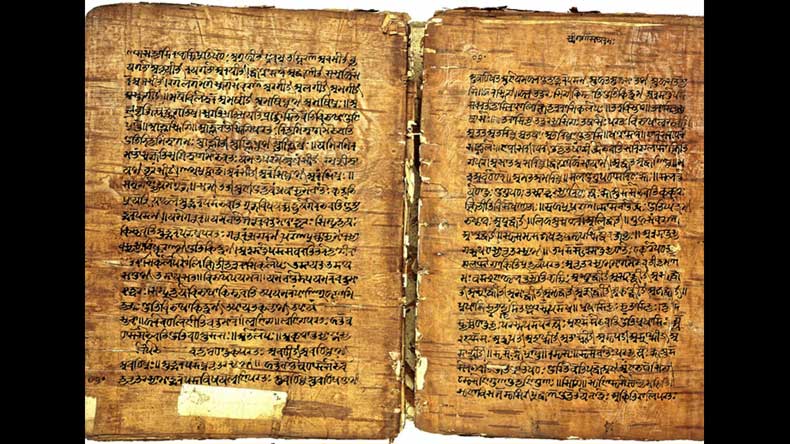Around 300-400 manuscripts exist on different types of yoga in India’s treasure box, not one of which has been deciphered. According to the National Mission for Manuscripts (NMM), these are part of the approximately one crore manuscripts in the country that are yet to be published. In fact, less than 10% of ancient manuscripts in India have been published.
The oldest manuscript in NMM’s database belongs to the 6th century and is written in the Gilgit script, which belongs to the Gilgit Baltistan region in the north. The maximum number of manuscripts relate to yoga, ayurveda, astronomy and astrology. Then there are unpublished Bhagwad Gitas, several versions of Ramayana, Mahabharata and also a wide range of illustrated manuscripts.
Since its inception in 2003, the NMM has managed to create a database of over 40 lakh manuscripts in secular and religious sciences in over 57 scripts such as Brahmi, Sharada, Grantha, Devanagari, Kharosthi, etc. However, scholars complain that the lack of published manuscripts, especially in ancient Indian sciences, has slackened India’s potential dominance in the international scientific industry. Scholars believe that a major reason behind this has been the lack of political goodwill in investing in transliteration of ancient manuscripts.
Dr N.C. Kar, an expert in manuscripts and a coordinator at NMM, said, “It is not an easy process to decipher centuries’ old manuscripts. Only scholars trained in ancient languages can transliterate them and publish them in a form and language that is comprehensive for the modern reader. This requires quality human resource and investment.”
However, revealing the sad state of affairs, sources within the NMM said, “In 13 years of the NMM’s history, except three-four years, the director’s post has stayed vacant. The current director was appointed six months ago after the post stayed vacant for the past three years. The total money spent by NMM since 2003 on creating database, digitisation and conservation of manuscripts along with salaries of the 25 employees, office working expenses, rent for office space etc., do not exceed Rs 100 crore. But NMM has worked its way around these shortcomings to continue to work for manuscripts that are a huge source of Indian literary heritage.”
Explaining the recent progress in work, Prof V. Venkata Ramana Reddy, Director, NMM, said, “In order to boost the publication of manuscripts, the NMM had started two programmes to attract more students towards paleography by way of seminars and workshops. For the next academic year, NMM is aiming to publish around 50 books written on ancient Indian manuscripts. We have a long way to go to promote our ancient treasures that not only educate us about our cultural roots, but give us a sense of pride to know how much scientifically advanced our forefathers were.”
Dr Kar said, “It is not only culturally but financially beneficial, too, to be able to decipher and interpret the secular sciences’ manuscripts. This Indian scientists and companies realised when in 2013 an American conglomerate claimed patent over turmeric’s use as a medicinal remedy as their invention, though the use of turmeric for the treatment of inflammation, psoriasis and gastritis etc., was a popular household staple for Indians. We were able to win the legal battle over turmeric patent because we had our ancient texts to provide evidence of India’s discovery of turmeric’s medicinal properties. There have been similar conflicts over neem patent as well. Imagine if we have a large published material, we can use to get patents for products that have gained popularity in international markets over the last few decades. Our companies can establish their dominance in industry and as well research.”
The value of ancient Indian manuscripts is evident with Japan’s rapid growth in ayurvedic research as the Asian neighbour has been known to invest in developing advanced ayurvedic technology.
“Illiteracy in our ancient research has led us to follow the lead of other cultures because we do not know how much our heritage and science had excelled in the world. This ignorance has made us late-risers, but a genuine effort is needed to promote the study of ancient Indian texts that can help us in governance, scientific research, cultural development and medicine,” said Dr Kar.

